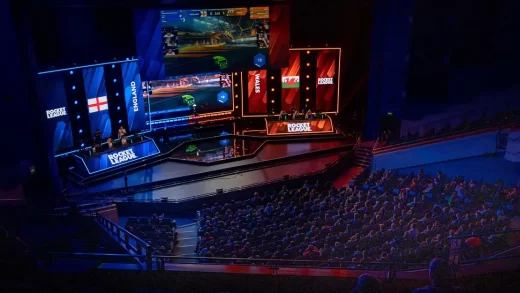“The Legend of Zelda” is a critically acclaimed and enduring action-adventure video game series developed by Nintendo. Created by Shigeru Miyamoto and Takashi Tezuka, the series made its debut in 1986 with the release of the first game, simply titled “The Legend of Zelda,” for the Nintendo Entertainment System (NES).
The series is known for its unique blend of exploration, puzzle-solving, and immersive storytelling. The protagonist, Link, is often portrayed as a courageous hero on a quest to rescue Princess Zelda and thwart the plans of the primary antagonist, Ganon (or Ganondorf). The narrative typically unfolds in the fantasy land of Hyrule, a richly detailed and diverse world with various regions, dungeons, and characters.
Key elements of the series include Link’s iconic green tunic and hat, his arsenal of weapons such as the Master Sword and the Hylian Shield, and the presence of magical items like the boomerang and hookshot. Central to the gameplay is the concept of dungeons, each containing puzzles, enemies, and a boss that must be defeated to progress in the story.
The series has evolved over the years, with each new installment introducing innovations while retaining the core elements that fans love. Notable titles in the series include:
The Legend of Zelda: Ocarina of Time (1998):
Widely regarded as one of the greatest video games of all time, this installment introduced 3D graphics and innovative gameplay mechanics, including the use of the titular ocarina for time travel and music-based puzzles.
The Legend of Zelda: A Link to the Past (1991):
A beloved entry for the Super Nintendo Entertainment System (SNES), this game is praised for its engaging story, top-down perspective, and introduction of the parallel world mechanic.
The Legend of Zelda: Breath of the Wild (2017):
Released for the Nintendo Switch, this open-world installment is a departure from traditional Zelda games. It received widespread acclaim for its vast, open-ended exploration, dynamic physics, and innovative approach to game design.
The Legend of Zelda: Majora’s Mask (2000):
A direct sequel to “Ocarina of Time,” this installment introduced a time-based mechanic where Link must relive the same three days repeatedly to prevent the moon from crashing into the world of Termina. The game is known for its darker tone and unique atmosphere.
The Legend of Zelda: Wind Waker (2002):
Departing from realistic graphics, “Wind Waker” features a cel-shaded art style. It follows Link’s journey across a vast ocean to rescue his sister and confront the mysterious Ganon. The game received praise for its art direction and exploration elements.
The Legend of Zelda: Twilight Princess (2006):
Returning to a more realistic visual style, “Twilight Princess” explores the parallel realm of Twilight, where Link transforms into a wolf. The game is celebrated for its mature themes, engaging dungeons, and innovative use of the Wii and GameCube’s motion controls.
The Legend of Zelda: Skyward Sword (2011):
Introducing motion-controlled swordplay, “Skyward Sword” explores the origins of the Master Sword and the conflict between Link, Zelda, and the demonic entity Demise. The game received praise for its intricate story and inventive use of the Wii’s motion controls.
The Legend of Zelda: A Link Between Worlds (2013):
A spiritual successor to “A Link to the Past,” this installment for the Nintendo 3DS features a unique ability for Link to transform into a 2D painting, allowing him to traverse walls. It received acclaim for its nostalgic nods and innovative gameplay.
The Legend of Zelda: Tri Force Heroes (2015):
A multiplayer-centric game for the Nintendo 3DS, where players work together to solve puzzles and defeat enemies in various dungeons. It offers a cooperative experience with a focus on teamwork.
The Legend of Zelda: Hyrule Warriors (2014):
Unlike traditional Zelda games, “Hyrule Warriors” is a hack-and-slash action game developed by Omega Force. It combines the world of Zelda with the gameplay style of the “Dynasty Warriors” series, offering
The Legend of Zelda: Breath of the Wild 2:
Announced as a sequel to the highly successful “Breath of the Wild,” this game is highly anticipated. While details were scarce as of my last update in January 2022, fans are eager to explore more of Hyrule and experience new gameplay innovations.
Conclusion:
“The Legend of Zelda” continues to be a cornerstone of Nintendo’s gaming legacy, with each installment contributing to the series’ rich lore and innovative gameplay mechanics. Its influence extends beyond gaming, impacting popular culture and inspiring generations of players and game developers alike.
“The Legend of Zelda” series has become a cultural phenomenon, influencing game design and storytelling in the industry. It has spawned numerous sequels, prequels, spin-offs, manga, and even an animated television series. The franchise’s enduring popularity is a testament to its ability to captivate players with its engaging narratives, memorable characters, and timeless gameplay mechanics.













